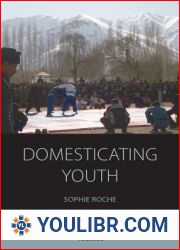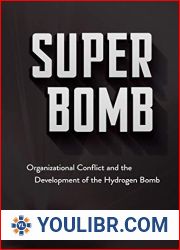
BOOKS - Wildlife, Conservation, and Conflict in Quebec, 1840-1914 (Nature | History |...

Wildlife, Conservation, and Conflict in Quebec, 1840-1914 (Nature | History | Society)
Author: Darcy Ingram
Year: January 1, 2013
Format: PDF
File size: PDF 15 MB
Language: English

Year: January 1, 2013
Format: PDF
File size: PDF 15 MB
Language: English

Despite the popular assumption that wildlife conservation is a recent phenomenon, it actually emerged over a century and a half ago, in an era more closely associated with wildlife depletion than preservation. In "Wildlife Conservation and Conflict in Quebec Darcy Ingram explores the combination of NGOs, fish and game clubs, and state-administered leases that formed the basis of a unique system of wildlife conservation in North America. Inspired by a longstanding belief in progress, improvement, and social order based on European as well as North American models, this system effectively privatized Quebec's fish and game resources, often to the detriment of commercial and subsistence hunters and fishers who were excluded from decision-making processes and faced increasingly restrictive regulations. This book examines how the development of wildlife conservation in Quebec was shaped by conflicts between different groups of people and their ideas about nature, society, and the future of human existence.
Несмотря на популярное предположение, что сохранение дикой природы является недавним явлением, оно фактически возникло более полутора веков назад, в эпоху, более тесно связанную с истощением дикой природы, чем с сохранением. В книге «Сохранение дикой природы и конфликты в Квебеке» Дарси Ингрэм исследует сочетание НПО, рыбных и игровых клубов, а также государственной аренды, которые легли в основу уникальной системы охраны дикой природы в Северной Америке. Вдохновленная давней верой в прогресс, улучшение и социальный порядок, основанный на европейских, а также североамериканских моделях, эта система эффективно приватизировала рыбные и промысловые ресурсы Квебека, часто в ущерб коммерческим и натуральным охотникам и рыбакам, которые были исключены из процессов принятия решений и столкнулись со все более ограничительными правилами. В этой книге рассматривается, как развитие охраны дикой природы в Квебеке было сформировано конфликтами между различными группами людей и их представлениями о природе, обществе и будущем человеческого существования.
Malgré l'hypothèse populaire que la conservation de la faune est un phénomène récent, elle est en fait apparue il y a plus d'un siècle et demi, à une époque plus étroitement liée à l'épuisement de la faune qu'à la conservation. Dans le livre Conservation de la faune et conflits au Québec, Darcy Ingram explore un mélange d'ONG, de clubs de pêche et de jeux ainsi que de locations publiques qui ont servi de base à un système unique de conservation de la faune en Amérique du Nord. Inspiré par une foi de longue date en le progrès, en l'amélioration et en un ordre social fondé sur des modèles européens et nord-américains, ce système privatise efficacement les ressources halieutiques et halieutiques du Québec, souvent au détriment des chasseurs et pêcheurs commerciaux et naturels qui sont exclus des processus décisionnels et confrontés à des règles de plus en plus restrictives. Ce livre examine comment le développement de la conservation de la faune au Québec a été façonné par des conflits entre différents groupes d'individus et leurs perceptions de la nature, de la société et de l'avenir de l'existence humaine.
A pesar de la suposición popular de que la conservación de la vida silvestre es un fenómeno reciente, en realidad surgió hace más de un siglo y medio, en una época más estrechamente relacionada con el agotamiento de la vida silvestre que con la conservación. En el libro «Preservación de la vida silvestre y conflictos en Quebec», Darcy Ingraham explora una combinación de ONG, clubes de pesca y juegos, así como alquileres estatales, que formaron la base de un sistema único de conservación de la vida silvestre en América del Norte. Inspirado por una larga creencia en el progreso, la mejora y el orden social basado en modelos europeos y también norteamericanos, este sistema privatizó efectivamente los recursos pesqueros y pesqueros de Quebec, a menudo en detrimento de los cazadores y pescadores comerciales y de subsistencia que habían sido excluidos de los procesos de toma de decisiones y enfrentados a regulaciones cada vez más restrictivas. Este libro examina cómo el desarrollo de la conservación de la vida silvestre en Quebec se formó por conflictos entre diferentes grupos de personas y sus ideas sobre la naturaleza, la sociedad y el futuro de la existencia humana.
Nonostante l'ipotesi popolare che la conservazione della fauna selvatica sia un fenomeno recente, è nato più di un secolo e mezzo fa, in un'epoca più strettamente legata all'esaurimento della fauna selvatica che alla conservazione. In «Conservazione della fauna selvatica e dei conflitti in Quebec», Darcy Ingram indaga su una combinazione di ONG, club di pesca e giochi e affitti pubblici che sono stati alla base di un unico sistema di conservazione della fauna selvatica in Nord America. Ispirato da una lunga fede nel progresso, nel miglioramento e nell'ordine sociale basato sui modelli europei e nordamericani, il sistema ha privatizzato efficacemente le risorse di pesca e pesca del Quebec, spesso a danno di cacciatori e pescatori commerciali e naturali, che sono stati esclusi dai processi decisionali e hanno affrontato regole sempre più restrittive. In questo libro si considera come lo sviluppo della conservazione della fauna selvatica in Quebec sia stato formato da conflitti tra diversi gruppi umani e le loro idee sulla natura, la società e il futuro dell'esistenza umana.
Trotz der populären Annahme, dass die Erhaltung der Tierwelt ein neues Phänomen ist, ist sie tatsächlich vor mehr als anderthalb Jahrhunderten entstanden, in einer Zeit, die enger mit der Erschöpfung der Tierwelt als mit der Erhaltung verbunden ist. In „Wildlife Conservation and Conflicts in Quebec“ untersucht Darcy Ingram die Kombination von NGOs, Fisch- und Spielclubs sowie staatlichen Pachtverträgen, die die Grundlage für das einzigartige Wildlife Conservation System in Nordamerika bildeten. Inspiriert von einem langjährigen Glauben an Fortschritt, Verbesserung und soziale Ordnung, basierend auf europäischen und nordamerikanischen Modellen, privatisierte dieses System effektiv die Fischerei- und Fischereiressourcen Quebecs, oft zum Nachteil von kommerziellen und natürlichen Jägern und Fischern, die von Entscheidungsprozessen ausgeschlossen waren und mit zunehmend restriktiven Vorschriften konfrontiert waren. Dieses Buch untersucht, wie die Entwicklung des Wildtierschutzes in Quebec durch Konflikte zwischen verschiedenen Menschengruppen und deren Vorstellungen von Natur, Gesellschaft und Zukunft der menschlichen Existenz geprägt wurde.
''
Yaban hayatı korumanın yeni bir fenomen olduğu popüler varsayımına rağmen, aslında bir buçuk yüzyıldan daha uzun bir süre önce, yaban hayatı tükenmesi ile daha yakından ilişkili bir dönemde ortaya çıktı. "Quebec'te Yaban Hayatı Koruma ve Çatışma'da Darcy Ingram, Kuzey Amerika'da eşsiz bir yaban hayatı koruma sisteminin temelini oluşturan STK'ların, balık ve oyun kulüplerinin ve hükümet kiralamalarının karışımını araştırıyor. İlerleme, gelişme ve Avrupa ve Kuzey Amerika modellerine dayanan uzun süredir devam eden bir inançtan esinlenen bu sistem, Quebec'in balıkçılık ve balıkçılık kaynaklarını, genellikle ticari ve geçimlik avcıların zararına etkili bir şekilde özelleştirdi. karar alma süreçlerinden dışlanan ve giderek kısıtlayıcı düzenlemelerle karşı karşıya kalan balıkçılar. Bu kitap, Quebec'teki yaban hayatı korumanın gelişiminin, farklı insan grupları arasındaki çatışmalarla ve insan varlığının doğası, toplumu ve geleceği hakkındaki fikirleriyle nasıl şekillendiğini incelemektedir.
على الرغم من الافتراض الشائع بأن الحفاظ على الحياة البرية ظاهرة حديثة، فقد ظهر بالفعل منذ أكثر من قرن ونصف، في عصر يرتبط ارتباطًا وثيقًا باستنفاد الحياة البرية أكثر من الحفظ. في «الحفاظ على الحياة البرية والصراع في كيبيك»، تستكشف دارسي إنجرام مزيجًا من المنظمات غير الحكومية ونوادي الأسماك والألعاب وعقود الإيجار الحكومية التي شكلت أساسًا لنظام فريد للحفاظ على الحياة البرية في أمريكا الشمالية. مستوحاة من الإيمان الراسخ بالتقدم والتحسين والنظام الاجتماعي القائم على النماذج الأوروبية وكذلك نماذج أمريكا الشمالية، قام هذا النظام بخصخصة موارد الصيد والصيد في كيبيك بشكل فعال، غالبًا على حساب الصيادين التجاريين وصيادي الأسماك الذين تم استبعادهم من عمليات صنع القرار وواجهوا لوائح تقييدية بشكل متزايد. يبحث هذا الكتاب في كيفية تشكيل تطور الحفاظ على الحياة البرية في كيبيك من خلال النزاعات بين مجموعات مختلفة من الناس وأفكارهم حول طبيعة ومجتمع ومستقبل الوجود البشري.

















































